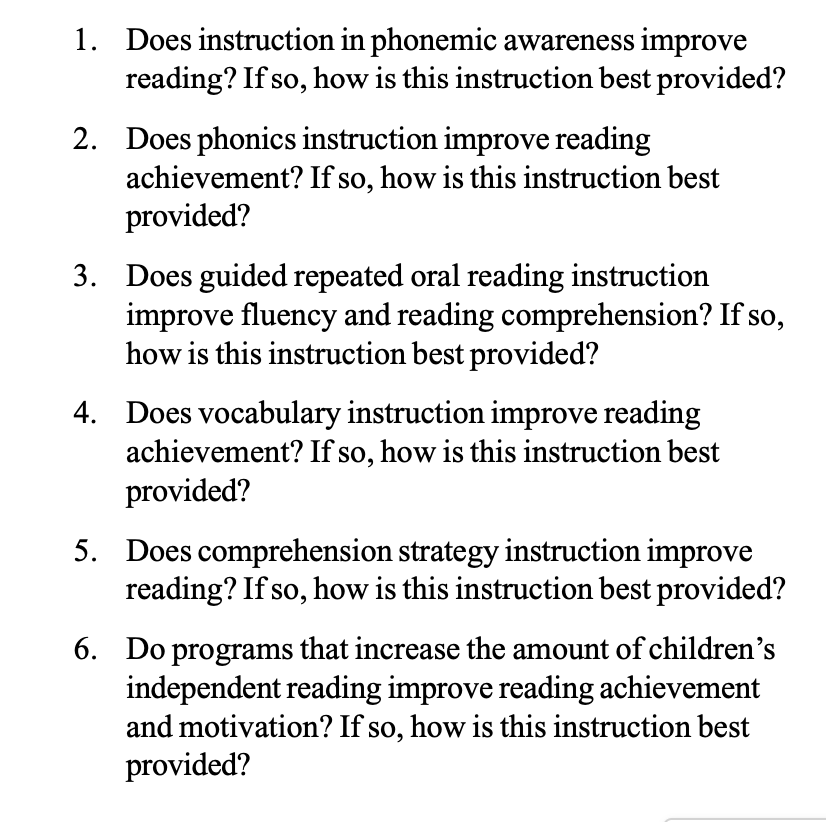
According to the National Association of Educational Progress (NAEP), 66% of fourth-grade read BELOW grade level. Only 24% can read at grade level.
Combine that with the decades of evidence that shows us that kids who dont learn to read by the end of 3rd grade have significantly
WHAT’S WORSE- is these heartbreaking scores HAVE remained the same for OVER 30 YEARS since the NAEP began this assessment in 1992.
The problem needs to be addressed if we want to ensure that all students have the skills they need to succeed in school and in life.
For students to become proficient readers, they need to develop strong phonemic awareness (the ability to identify and manipulate individual sounds in words), phonics (the understanding of the relationship between letters and sounds), vocabulary, and comprehension skills.

Rigorous research has been showing us how children learn to read and the most effective ways to teach reading for decades, yet California policymakers in education have yet to adapt.
Many teachers dont know the science of reading, or that the science of reading exists. We’ve had the information we needed for well over 20 years on how to produce strong readers yet there has been no progress made in reading scores. Recent studies have even shown that many of the strategies teachers teach for reading are actually causing more harm than good for their reading skills. Children are being set up for failure from the begining.
Decades later and schools are still not lining up with the science.
Kids are not being taught how to read because for decades teachers have been using strategies and curriculum based on false claims on how children learn how to read. We put no blame on teachers. Teachers continue to be trained in this harmful way even though the theories were debunked before many teachers were even born.
Evidence-based reading instruction uses a structured approach that ensures students receive instruction in each of these areas and that instruction is delivered in a logical and sequential manner.
To address the literacy crisis in California, policymakers and educators need to prioritize evidence-based reading instruction and materials.
By promoting effective reading instruction based on the science of reading, California can help ensure that all students have the foundational literacy skills they need to succeed in school and in life.

Not following the science of reading,
Teachers are untrained to teach reading because the government dropped billions of dollars on curriculum that was aligned with their false theory.
in 1997,
In 1997, to address the literacy crisis, congress along with the NICHD and the U.S. Dept of Education appointed a National Reading Panel made up of 14 educators and scientists to evaluate existing research and evidence to find the best ways of teaching children to read.
The NRP concluded their research and submitted their final report on April 13, 2000.
IN 2000, the federal government released an extensive review of research that took place over decades by the National Reading Panel (NRP). The federal government The NRP published a 449 page review of the rigorous research that’s been conducted over decades and to answer the questions….
Congress tasked the NRP to “assess the status of research based knowledge, including the effectiveness of various approaches to teaching children to read.” Additionally, the National Institute of Child Health and Development (NICHD) provided a set of specific questions to pin-point problems and solutions.

1 out of 4 kids in fourth grade can not read at grade level. This means they can not read key words that are needed to understand the text.
Universities and research institutions like the Center on the Developing Child at Harvard, have been urgently relayed all congress of the curriculum and instructional change department of education and education policymakers
The panel reviewed over 100,000 studies.
In 2000, the NRP concluded their findings. Their testimony states that the best approach to reading instruction is one that systematically teaches the following 5 pillars :
Phonemic Awareness
Phonics
Fluency
Comprehension

In 2020, a group of students, parents and advocates won a lawsuit against the California State Department of Education and State Board of Education for failing to provide students with their basic right to an education. (CalMatters)
Langenburg, D. (April 13, 2000). Testimony before the U.S. Senate Appropriations Committee’s Subcommittee on Labor, Health & Human Services, and Education. National Reading Panel, National Institute of Child Health and Human Development.
Discover more from Skate Motivate Educate
Subscribe to get the latest posts sent to your email.




You must be logged in to post a comment.